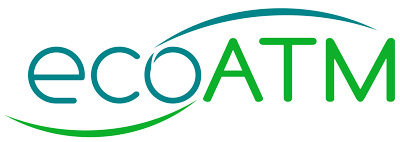Regional Communications System
County of San Diego, California, May 2000
Background
The Regional Communications System (RCS) Project involved the construction of public safety, public service wireless radio communication networks that provide the primary communication links for 163 local, county and state governmental agencies throughout the 4,500 square mile County of San Diego. The 43 networked radio repeater sites use over 150, 800 MHz frequencies and provide more than 97% coverage of the roadway network for 12,00 current users. Users include most of the fire, law, EMS and public works departments in San Diego County. The RCS planning began in 1992 with the support of the County Board of Supervisors. Project implementation began in 1995. While the County has underwritten the cost of the network, participating jurisdictions and agencies contributed a portion of the total cost. User agencies also share the annual network operating costs. The Board of Supervisors has delegated administration of the RCS to a Board of Directors comprised primarily of top law and fire service administrators from throughout the county. County staff manages RCS operations. The County of Imperial also is a participant in the RCS and is building additional repeater sites for their user agencies. The added sites will expand the RCS sphere of influence to about 10,000 square miles, supporting over 191 agencies along 185 miles of the international border with Mexico between the Pacific Ocean and the Arizona border.
Operational Issues
The multiple, previous public safety communications systems in San Diego and Imperial Counties (VHF, UHF, 800 MHz) did not effectively serve emergency response needs. Most used 1970’s technology, were nearing obsolescence, experiencing increasing failure, provided inadequate coverage and were not interoperable. The lack of interoperability hindered effective mutual aid operations.
The cost of building and maintaining wireless communications systems is high. Existing commercial systems cannot meet key public safety requirements of (1) priority access, and (2) effective coverage. Frequently, public safety users must have first priority in accessing a radio frequency. Waiting in a radio queue while routine business is being conducted could cause unnecessary loss of life or property. Commercial radio systems have yet to offer priority access and thus were not a viable choice for agencies with a life saving mission.
Additionally, governments need wireless coverage in remote areas of their jurisdictions to support necessary public services such as firefighting, emergency medical response, search and rescue, and drug interdiction. Commercial radio systems available in the Southern California region did not offer the coverage needed in remote areas because of the limited return on the needed investment.
Furthermore, the older existing systems had no remaining capacity and there was little or no ability to add frequencies. Governments must also compete with commercial enterprises for radio frequencies, making frequencies a valuable resource. The use of radio frequencies in Southern California is further complicated by the fact that Mexican users are in competition for the same frequencies, yet utilize their own licensing process, which is frequently at odds with the Federal Communications Commission.
The County of San Diego was obligated to improve public safety communications for the county public safety departments, just as the other jurisdictions in the region were responsible for improving their public safety communications.
The Regional Communications System Advantage
The primary RCS goal is to provide seamless, wireless communications for governmental public safety/service agencies throughout San Diego and Imperial County. The RCS vision was developed in 1992, jurisdictions committed to costs to build the system by 1995, and system construction began in 1996. By mid-1999, most public safety/service personnel serving nearly 3 million people in the two counties will be using the RCS or an existing compatible wireless communication system. "Compatibility" or "Interoperability" means public safety providers from different disciplines and agencies will be able to talk readily with each other to coordinate effective responses, resulting in saving lives and property.
The County of San Diego took the lead in drafting an acceptable RCS Participating Agency Agreement, which was ultimately ratified by each governing body. County staff also assumed project management responsibility, negotiated contracts with vendors and provided training to each of the participant agencies.
Following is a list of departments/agencies/companies in San Diego County only who are currently RCS customers or who have agreed to become RCS customers in the near future. Departments in Imperial County (28, plus a dispatch center) have not been included. There are also six dispatch centers on the RCS in San Diego County.
Regional Communications System
Participating Agencies as of December 1999
(*Transistion not complete or not started)
Members/Customers
| City of Carlsbad 1. Fire/EMS 2. Law 3. Lifeguard 4. Public Works City of Coronado 5. *Fire/EMS 6. *Law 7. *Lifeguard 8. *Public Services 9. *Recreation City of Del Mar 10. Fire/EMS 11. Law 12. Lifeguard 13. Public Works City of El Cajon 14. Fire/EMS 15. Law 16. Public Works City of Encinitas 17. Fire/EMS 18. Law 19. Lifeguard 20. Public Works City of Imperial Beach 21. Fire/EMS 22. Law 23. Public Works City of Lemon Grove 24. Fire/EMS 25. Law 26. Public Works City of Poway 27. Fire/EMS 28. Law 29. Public Works City of San Marcos 30. Fire/EMS 31. Law 32. Public Works City of Santee 33. Fire/EMS 34. Law 35. Public Works 36. Padre Dam City of Solana Beach 36. Fire/EMS 37. Law 38. Lifeguards 39. Public Works City of Vista 40. Law 41. Fire/EMS 42. Public Works 43. Alpine Fire 44. Bonita-Sunnyside Fire 45. Borrego Springs Fire 46. Boulevard Fire 47. Campo Fire 48. Deer Springs Fire Prot. District 49. East County Fire 50. Elfin Forest Fire 51. Intermountain Fire 52. Lakeside Fire 53. Mt. Laguna Fire 54. North County Fire 55. Ocotillo Wells Fire 56. Palomar Mountain Fire 57. Pine Valley Fire 58. Ramona Fire 59. Ranchita Fire 60. Rancho Santa Fe Fire 61. San Miguel Fire 62. San Pasqual Fire 63. Shelter Valley Fire 64. Sunshine Summit Fire 65. Warner Springs Fire 66. Vista Fire Prot. District |
County Departments 66. Agriculture 67. Animal Control 68. Disaster Preparedness 69. District Attorney 70. EMS (CSA 17) 71. General Services 72. Health Services 73. Information Services 74. Marshal 75. Medical Examiner 76. Parks & Recreation 77. Planning & Land Use 78. Probation 79. Public Works 80. Sheriff's Department 81. Alvarado Hospital 82. American Medical Response 83. American Ambulance 84. Balboa Ambulance 85. Balboa Naval Hospital 86. Barona Ambulance 87. Blood Bank 88. Bowers Ambulance 89. Care Ambulance 90. Cabrillo Hospital 91. Children's Hospital 92. Coronado Hospital 93. Event Medical 94. Fallbrook Hospital 95. Grossmont Hospital 96. Kaiser Hospital 97. Mission Bay Hospital 98. Naval Medical-Pendleton 99. Palomar Medical Center 100. Paradise Valley Hospital 101. Pomerado Hospital 102. Priority One 103. Schaefer Ambulance 101. Scripps Chula Vista 102. Scripps East 103. Scripps Memorial Hospital Encinitas 104. Scripps La Jolla 105. Sharps Chula Vista 106. Sharps Memorial 107. Sycuan Ambulance 108. Thornton Hospital 109. Tri City Medical Center 110. UCSD Medical Center 111. VA Hospital 112. Bureau of Land Management 113. *California State Parole 113. CALTRANS, District 11 114. CDF (partial involvement) 115. Heritage Security 116. *Grossmont College Police 117. North County Transit Trolley Security 118. Olivenhain Water District 119. Rancho Santa Fe Patrol 120. San Diego Humane Society 121. SDG&E Watershed Team 122. University of San Diego Police 123. Cajon Valley School District 124. Grossmont School District 125. Poway Unified School District 126. Vista Unified School District 127. City News Service 128. Jacor Communications 129. KFMB 130. KGTV 131. KNSD 132. North County Times 133. Union Tribune 134. XETV |
Regional Communications System
Participating Agencies as of December 1999
Mutual Aid Agencies
| Agencies | Interface with |
|---|---|
| 1. Air National Guard | County EMS |
| 2. Camp Pendleton Fire | County EMS and Ranch Santa Fe Fire |
| 3. Escondido Fire | County EMS |
| 4. INS | County EMS and All RCS Fire and Law Agencies |
| 5. Mirarmar Fire | County EMS |
| 6. La Mesa Fire | County EMS |
| 7. Law Mesa Law | County Sheriff |
| 8. National City Fire | County EMS |
| 9. National City Law | County Sheriff |
| 10. Oceanside Fire | County EMS and Rancho Santa Fe Fire |
| 11. City of San Diego | County EMS and All RCS Fire and Law Agencies |
Dispatch Centers
| 1. CALTRANS TMC |
| 2. Carlsbad Dispatch |
| 3. Coronado Dispatch Center |
| 4. El Cajon Dispatch Center |
| 5. Heartland Communications Facility Authority |
| 6. Monte Vista CDF Dispatch |
| 7. County Sheriff's Dispatch Center |
| 8. Rancho Santa Fe Dispatch |
The new system features the replacement of existing microwave systems, installation of 43 communication sites and the use of over 150, 800 MHz frequency pairs. The 800 MHz frequency spectrum was utilized because frequencies were no longer available in other frequency bands. Agencies with licenses for 800 MHz frequencies contributed them to the pool of available frequencies for shared RCS use throughout the two county area. This concept of sharing limited frequency resources is a primary reason why the RCS has proven successful. The resulting system has the capacity to accommodate 13,000 users and includes 97 percent coverage of the roadway network throughout San Diego County.
The system provides both voice and data radio communications on separate networks. The RCS voice network uses Motorola's SmartZone 800 MHz trunked, simulcast radio technology. It supports mixed mode analog and digital communications, including encrypted capabilities. The RCS data network uses Motorola's 19.2 RD-LAP protocol and will currently support over 3,000 data users, with significant expansion capability. The data network will support various data applications such as unit-to-unit messaging, GPS based Automatic Vehicle Location (AVL), Computer Aided Dispatch (CAD), and inquiries to local and national crime databases like the California Law Enforcement Telecommunication System (CLETS) and the National Crime Information Center (NCIC).
Participants share the annual RCS operating costs equally. These costs are expressed as per radio, per month charges. Beginning in July 1999, participants will receive a monthly invoice for their operating costs, based on the actual number of their radios that used the RCS the previous month. The RCS Board of Directors reviews the annual budget request and sets the monthly operating charge each January.
Summary
Departments and jurisdictions that in the past only had coverage that was limited to their immediate jurisdiction now can operate throughout the County while still being under the direction and control of their communication center. Continued petitioning for membership has proved the effectiveness of the system by agencies within San Diego County. At this writing, only three Cities of the nineteen cities within the county have not yet joined the RCS. Therefore, interoperability and inter-agency cooperation are at an all time high.
The RCS provides a model for cooperation in creation of large-scale communications systems. This model is multi-county in its current network structure. The network is easily modified to provide a statewide communications system by linking multi-county networks into a virtual communications internet.
For additional information please contact:
Chris Hinshaw
CO San Diego Wireless Services
555 Overland Ave. Bldg. 12
San Diego, California 92123
Phone: (858) 694-3663








